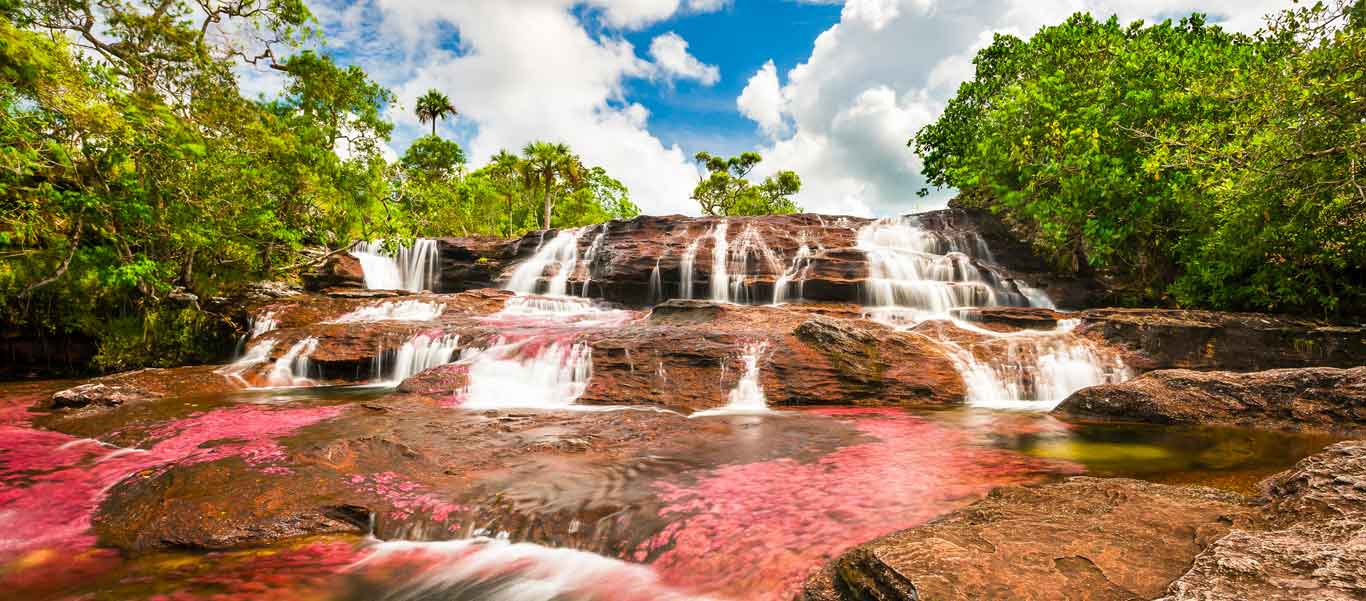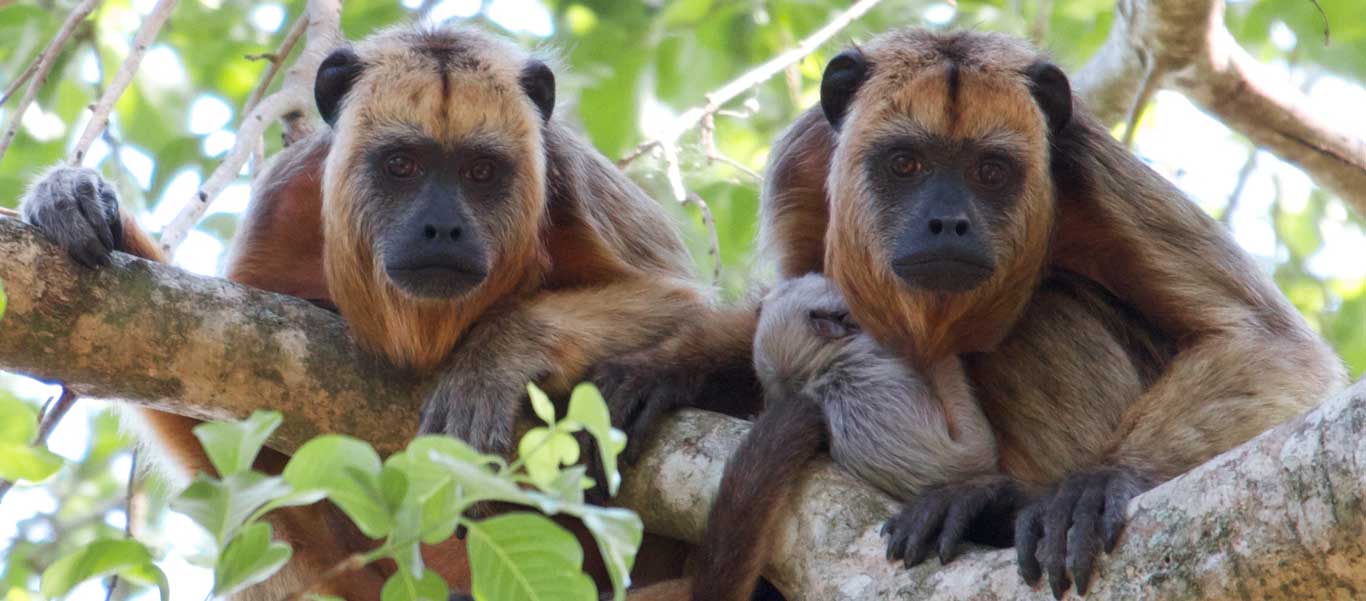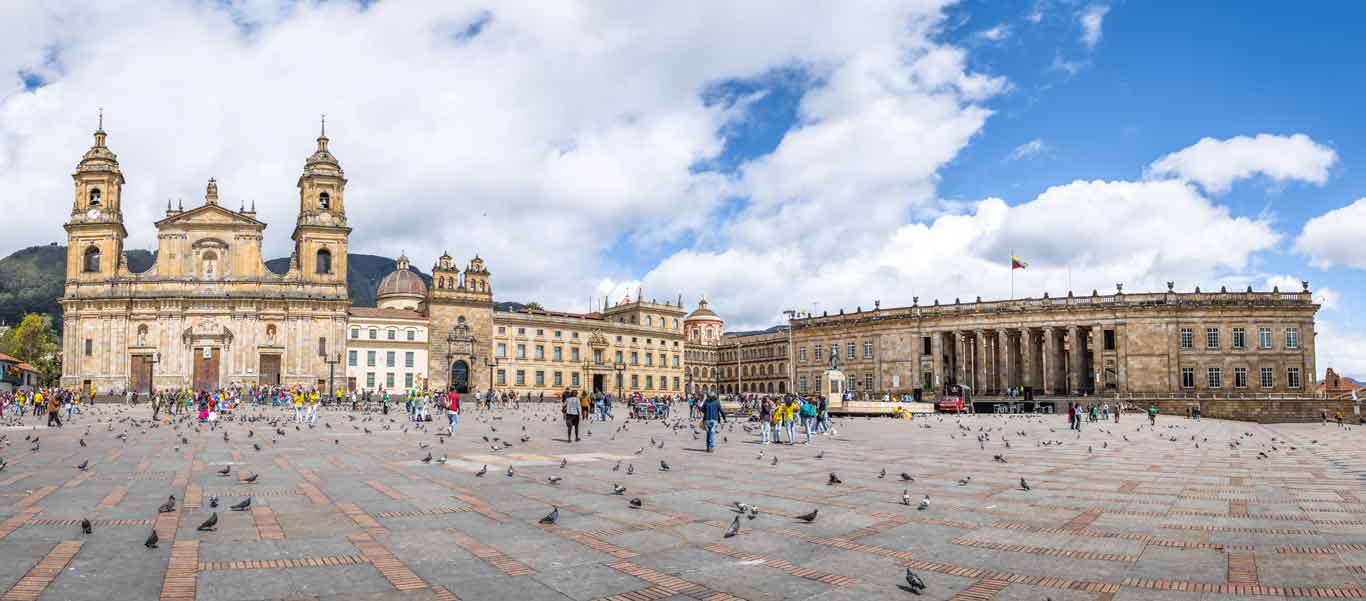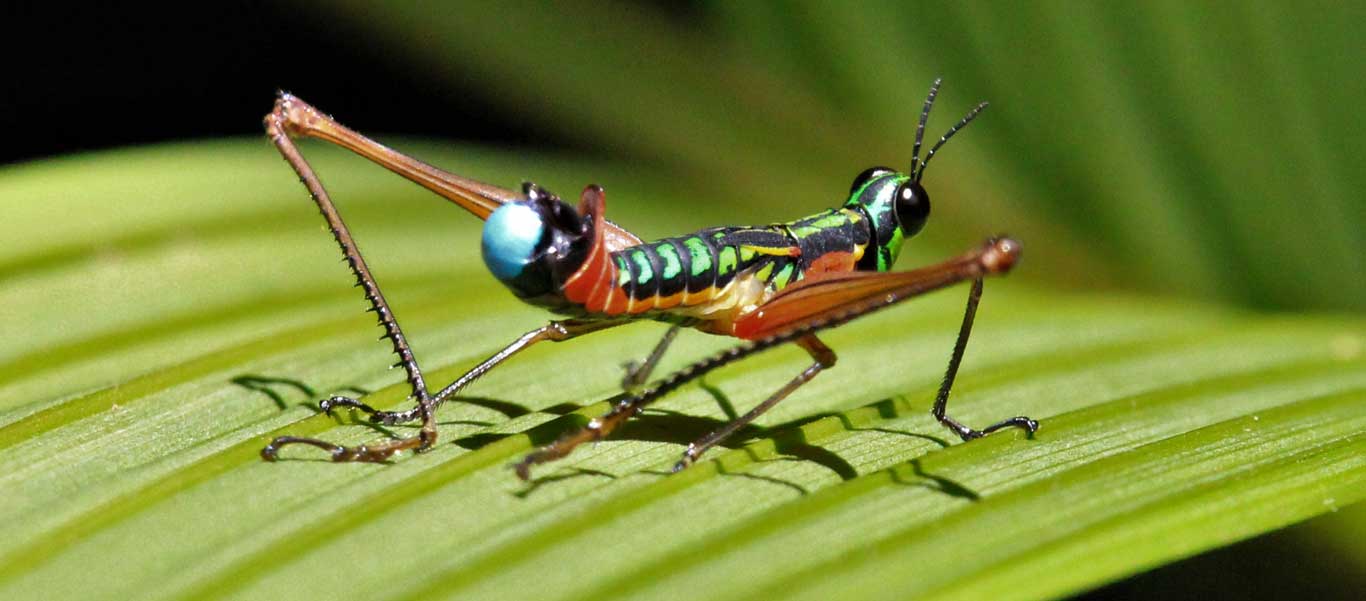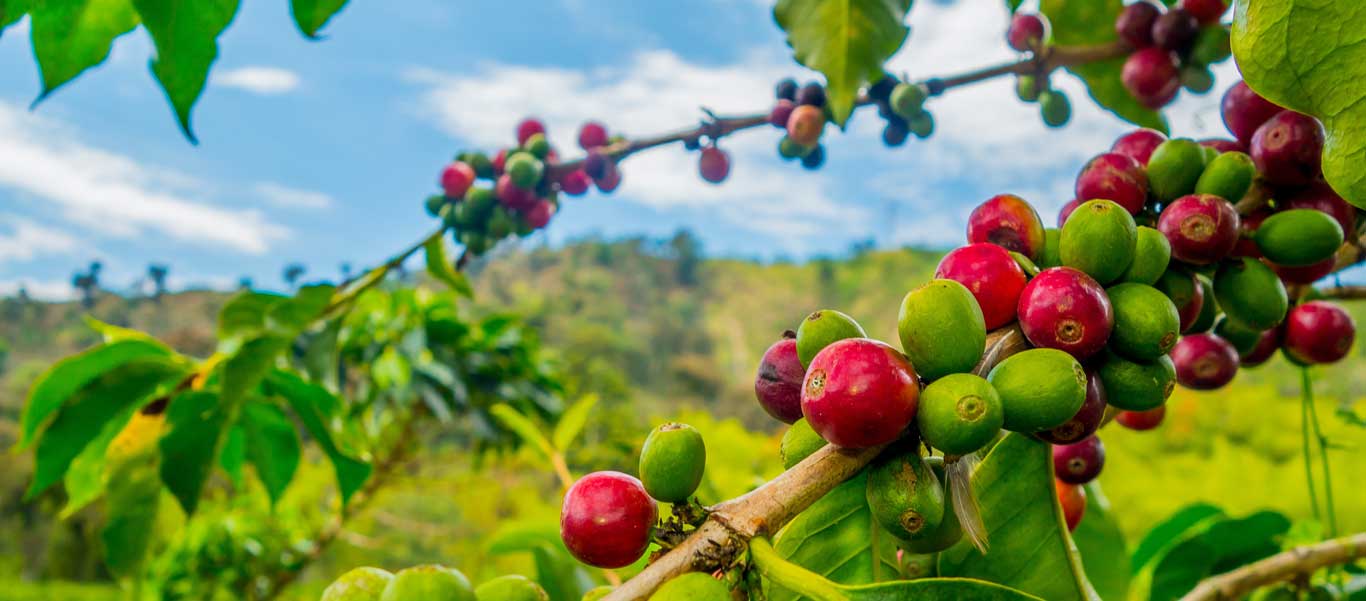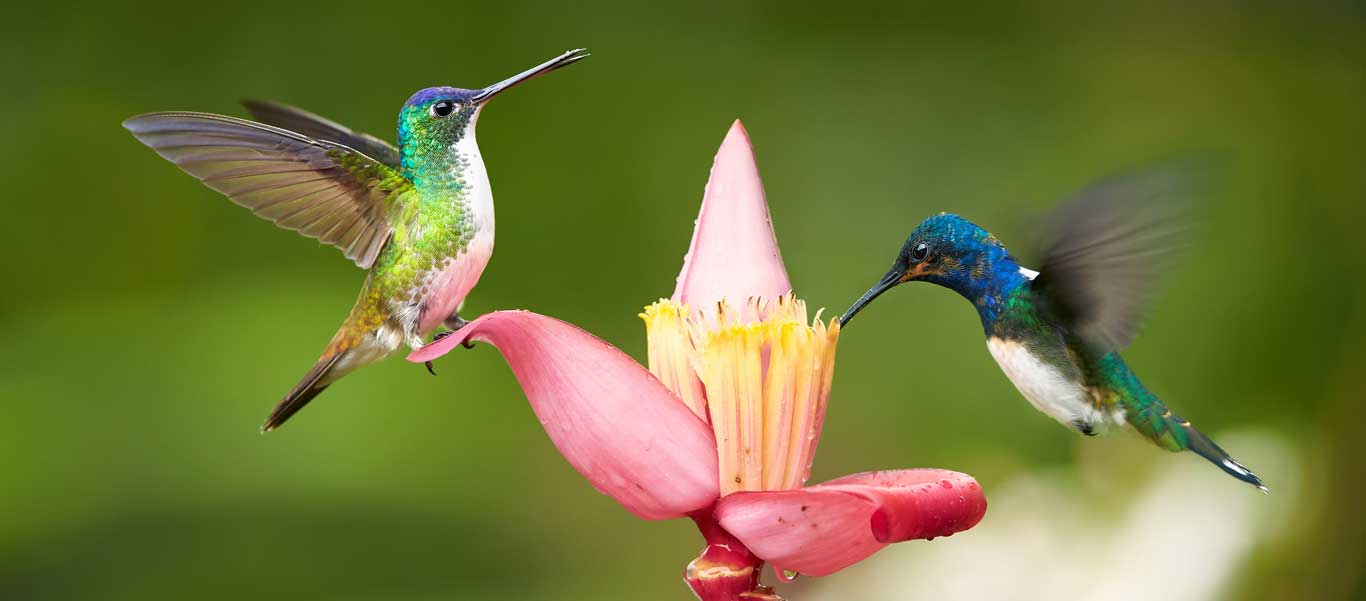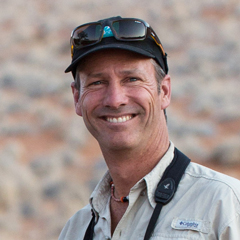Colombia
November 4–19, 2024
Colombia Nature & Cultural Tour
Colombia, a country once torn by strife and long closed off from the outside world, is a study in contrasts—from pristine rainforests echoing with bird calls, to lively modern cities like Cartagena and Bogotá; from snow-capped peaks to verdant coffee-growing valleys; golden beaches to rainbow-colored rivers flowing alongside vast Serengeti-like savannah. There is something of everything in this rich and friendly country, which contains more bird species than any other on Earth. Join Apex on this 16-day journey, carefully crafted to showcase exquisite colonial architecture, ancient ruins and vibrant local culture, as well as stunning natural spaces and wildlife. Now is the time to visit Colombia, before the rest of the world catches on.
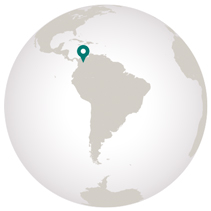
Destinations
- Travel by Air
- Travel by Road
- Travel by Boat
- Travel by Bullet Train
- Travel by Rail
- Travel by Dog Sled
- Day 1
- Day 2
- Day 3
- Day 4
- Days 5 & 6
- Day 7
- Day 8
- Day 9
- Day 10
- Day 11
- Day 12
- Day 13
- Day 14
- Day 15
- Day 16
-
Arrive Bogotá, Colombia
Arrive in Bogotá, a vital and sophisticated capital city that sits at 8,660 feet, cradled by the magnificent Andes. Transfer to your hotel in the heart of the La Cabrera neighborhood. This evening, meet your expedition leader and fellow travelers at a welcome dinner and overnight at Sofitel Victoria Regia.
-
Bogotá
After breakfast, visit one of Bogotá’s most important markets, Paloquemao Market. This early-morning market is filled with fresh fruit, vegetables, meat, fish and flowers. An authentic shopping experience offering a treat for the senses with vibrant colors, sounds and smells. Next, visit José Celestino Mutis Botanical Garden featuring plants from every Colombian altitude, climate and region. After lunch at a local restaurant, take a city tour, starting in the colonial quarter of La Candelaria. Amble past 300-year-old homes toward Plaza de Bolívar. Some of the city’s most significant buildings surround this square, including La Catedral Primada, the Presidential Palace and National Capitol, and the colonial churches of El Sagrario and San Agustin. Visit the Museo del Oro, containing more than 55,000 pieces of pre-Columbian gold. Dinner and overnight at Sofitel Victoria Regia.
-
Bogotá
Travel out of the city to the Observatorio de Colibríes, a hummingbird observatory with 14 species of hummingbird to be spotted busily buzzing around. This afternoon, take a cable car to the top of Monserrate Hill where you’ll have time to explore the Basilica Sanctuary of Monserrate, a pilgrimage site dating back to 1657. Enjoy sunset and panoramic views of Bogotá with dinner at a local restaurant on the hill. Overnight at Sofitel Victoria Regia.
-
Serranía de la Macarena National Park
This morning, transfer to the airport for a flight south to La Macarena, deep in the Plains, or Llanos, region. Just across the Guayabero River from town stands the immense Serranía de la Macarena National Park, the unique meeting point for the flora and fauna of the Orinoco, Amazon and the Andes. Head straight to the park facilities for a briefing on local conservation efforts, then spend the afternoon visiting the Cristalito and Guayabero Rivers. The group may split up according to activity level for walks or hikes in the area. Enjoy lunch at a local outdoor kitchen. Dinner and overnight at the rustic Hotel La Fuente.
-
Serranía de la Macarena National Park
Over the next two days explore the Serranía de la Macarena National Park. Embark on a many-tiered journey to the famed Caño Cristales, known affectionately as the “Liquid Rainbow” or “River of Five Colors” for the brilliant yellows, greens, blues, blacks, and especially reds caused by the endemic Macarenia clavígera plant that blankets the riverbed at this time of year. To get there, head to the dock by your hotel and take a boat down the Guayabero River. Look for monkeys—there are 8 species present here—as well as Hoatzín and caimans. About 20 minutes in, board4x4 vehicles and head over the mountains to the spring of Cajuche, the starting point for a moderate hike that takes you along the river, climbing over driftwood, then through the forest toward Caño Cristales. Swim in the many natural pools along the river. Notice the hollowed-out riverbed rocks, or “giant’s kettles,” along the way. The next day, traverse rivers and hiking trails to reach the Lake of Silence. From the vantage point of canoes, search the forest-fringed lake for bird life. Dinners and overnights at Hotel La Fuente.
-
Pereira
This morning, transfer to the airport for a flight west, via Bogotá, to Pereira, in the Zona Cafetera, Colombia’s principal coffee-growing area. Located in the lush foothills of the western and central ranges of the Cordillera de los Andes, this area was designated a UNESCO World Heritage Site in 2011. Overnight at Casa San Carlos Lodge.
-
Pereira – Valle de Cocora
Depart for Filandia, a shining example of local Bahareque architecture. Tour Filandia’s colorful, centuries-old buildings along Plaza de Bolívar and the surrounding streets lined with restaurants and shops. This afternoon head to Cocora Valley to hike among the towering Quindío Wax Palms, Colombia’s national tree and the tallest palm in the world, reaching up to 200 feet. Continue into the cloud forest, looking for the endemic Yellow-eared Parrot, Chestnut Wood Quail and Masked Trogon, among many other birds. Join in the Ritual de la Palma, or planting of a wax palm, as part of restoration efforts. Return to Pereira for dinner and overnight at Casa San Carlos Lodge.
-
Pereira – Otún Quimbaya Wildlife Sanctuary
Early this morning, head east, stopping in La Florida for buñuelos, or cheese fritters. Transfer to 4×4 vehicles and continue up the mountain to Otún Quimbaya/Uacari Flora and Fauna Sanctuary. This reserve is considered one of the best in Colombia for birding. Upon arrival, hike along the river trail looking for Cauca Guans, Torrent Ducks, Multicolored Tanagers, Green Jays and Red-ruffed Fruitcrows, along with Howler Monkeys, Mountain Tapir and Central American Agoutis, or Guatín. Enjoy lunch at the visitor center, then depart for a tour of nearby Finca del Café. Walk the plantation trail and learn about the coffee-making process, from bean to cup. Return to Pereira for dinner and overnight at Casa San Carlos Lodge.
-
Tayrona National Park
After breakfast, transfer to the airport for a flight north (via Bogotá) to Santa Marta, the “Pearl of America,” nestled between the sparkling Caribbean Sea and the dramatic Sierra Nevada, the world’s highest coastal mountain range.Santa Marta is South America’s oldest European-founded town, dating back to 1525, and its historic center has been meticulously restored. As time permits, visit Quinta San Pedro Alejandrino, before heading to Tayrona, possibly the best-known national park in Colombia, covering over 50 miles of golden beaches and montane rainforest. Dinner and overnight at Villa Maria Hotel.
-
Tayrona National Park
Apart from the park’s natural beauty, it’s also rich in cultural history, as it was home to thriving pre-Columbian tribes. After breakfast at the hotel, head to Tayrona National Park entrance for a hike. Next, take a guided tour of ancient Taironaka ruins. See remnants of their intricate drainage systems, terraces, stairs and houses, as well as a small museum housing more than 300 pieces of pottery found on site. After lunch at the reserve, head to the adjacent Rio Don Diego and climb into inner tubes for a relaxing float down the river. Return to the hotel, and enjoy an afternoon at leisure, or join a hike to the beach, with views over the jungle-clad mountains. Dinner and overnight at Villa Maria Hotel.
-
El Dorado Nature Reserve
Birders have deemed this area the “Northern Colombia Birding Trail.” Early this morning, search the lush vegetation on the grounds of the hotel to look for birds such as Scrub Greenlet and Buff-breasted Wren. Head south, up the foothills of the San Lorenzo ridge, stopping in Minca for lunch. Transfer to 4×4 vehicles and continue straight up to 6,200 feet to El Dorado Reserve’s lodge. The reserve is known worldwide for its magnificent endemic bird populations. Spend the rest of the day exploring the lodge grounds, looking for very rare Black-fronted Wood-Quails in the compost pile, and endemic Santa Marta Screech-owls and Santa Marta Antpittas at a feeder, as well as Black-backed Thornbills, Santa Marta Woodstars, Santa Marta Blossomcrowns and more. Enjoy dinner at the lodge, followed by the coaxing of Lemurine Night Monkeys and Kinkajous down from the trees for a feeding. Overnight at El Dorado Lodge.
-
El Dorado Nature Reserve
Overall, twenty endemic bird species have been found at El Dorado, and exploring at various elevations is key to seeing as many of them as possible. Start very early this morning, heading up the Cuchilla de San Lorenzo to look for Santa Marta Parakeets, Rusty-headed and Streak-capped Spinetails, Santa Marta Bush-tyrants, Santa Marta Mountain Tanagers, Yellow-crowned Whitestarts, Santa Marta Warblers, White-tipped Quetzals and Santa Marta Foliage-gleaners, all endemic or near-endemic to this reserve. Drop down to the Experimental Station for an attempt to lure in the elusive Santa Marta Antipitta. Return to the lodge for lunch and the afternoon spent exploring the lodge trails. The views from the lodge are simply spectacular, with humid montane forest stretching in all directions and the Caribbean below. Dinner, Kinkajou feeding and overnight at El Dorado Lodge.
-
Cartagena
This morning, head back down the mountain, and down the Caribbean coast, stopping in the port city of Barranquilla, known as the birthplace of Gabriel García Márquez and the site of Colombia’s largest Carnival celebration. After lunch, continue down the coast to the romantic and superbly preserved city of Cartagena, standing behind an impressive eight miles of colonial stone walls. Check into your hotel, then head out for a sunset cocktail at one of the baluarte bars located on the city walls. Dinner and overnight at Hotel Bastión.
-
Cartagena
This morning, start your city exploration from on high, visiting the Augustinian Convento de la Popa, located at Cartagena’s highest point, followed by the Castillo de San Felipe de Barajas, considered the greatest fortress ever built by Spaniards. Travel through the upscale Bocagrande district, then head to old El Centro for a walking tour. Enter through the imposing Clock Tower Gate and walk through the Plaza de los Coches and Plaza de La Aduana. Head to Plaza de Bolívar, home to the Government Palace, newly restored Catedral. End your tour at the baroque Convento de San Pedro de Claver, named for a Jesuit priest who spent his life ministering to slaves. Enjoy lunch at a local restaurant on Plaza Bolivar and take some time this afternoon at leisure. This evening, embark a sailboat for a sunset cruise before dinner. Overnight at Hotel Bastíon.
-
Cartagena
Transfer to the airport for your international flights home.
Details
- November 4–19, 2024
- Leaders Jonathan Rossouw
- $19,370 Per Person Rate
- $23,870 Solo Rate
- 16 days Trip Length
- 12 guests
- Bogotá Start
- Cartagena End
Call us to reserve your spot on this exciting expedition!

